Pakistan’s low spending on education, health stalls human development
Only 0.8% of GDP goes to education, 0.9% to health, even as literacy and child mortality remain critical, Pakistan Economic Survey reveals
News Desk
The News Desk provides timely and factual coverage of national and international events, with an emphasis on accuracy and clarity.
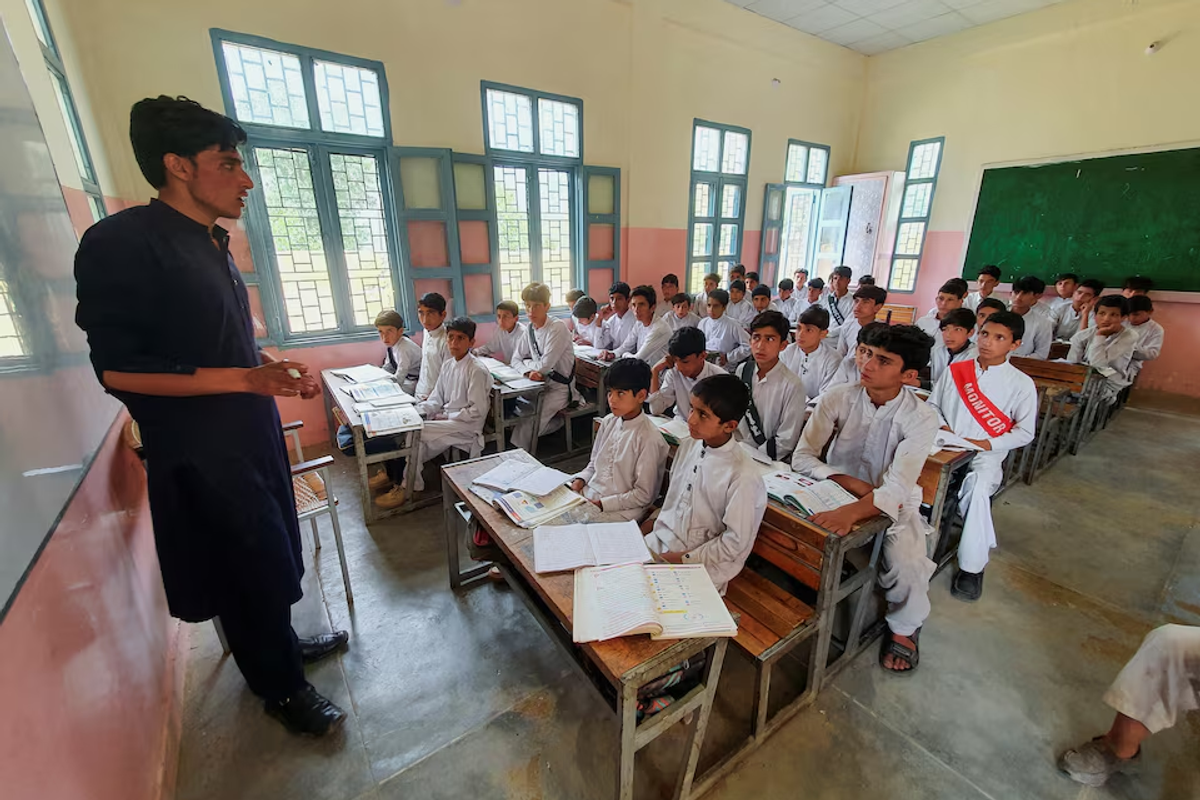
Children attend class at a school in Battagram, Pakistan, on Aug. 23, 2023.
Reuters
Pakistan continues to underinvest in its education and healthcare sectors despite a growing youth population and mounting pressure to meet global development goals, the Pakistan Economic Survey 2024–25 reveals.
Spending on education during the first nine months of fiscal year 2025 amounted to just 0.8% of the gross domestic product (GDP), while health received 0.9%, the survey said. Both figures fall far below international benchmarks and Pakistan’s own past spending levels.
The result: 38% of children remain out of school, the literacy rate stands at only 60.6%, and infant mortality remains high at 50.1 deaths per 1,000 live births as of 2023.
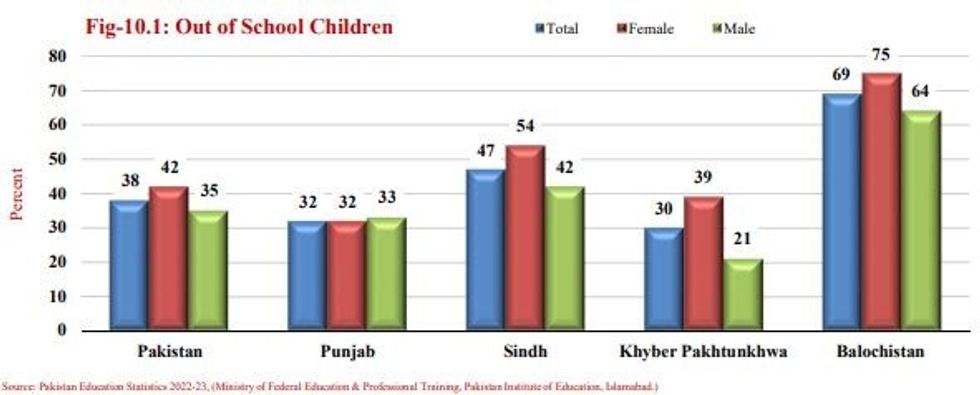
Education gaps persist despite policy focus
The federal government has repeatedly emphasized education’s role in social and economic transformation. Yet, the system remains riddled with disparities.
While the overall literacy rate is 60.6%, it drops sharply in rural areas to 51.6% and among females to 52.8%. Balochistan has the lowest overall literacy rate at just 42%, with female literacy in the province a mere 32.8%.

Gross enrollment rates are highest at the primary level—84%—but fall to 63% at middle school and 57% at matriculation. Net enrollment rates are even lower: only 64% of children aged 5–9 are in school, and just 27% of adolescents aged 13–14.
University enrollment dropped 13% in FY2023 to 1.94 million but is expected to slightly rebound to 1.95 million in FY2024. Meanwhile, only 37.97% of university faculty hold a Ph.D.
Access to facilities also varies. Only 67% of public schools have electricity, and just 76% provide clean drinking water. In Balochistan, only 21% of schools have electricity and 29% offer drinking water.
Nearly 30% drop in education spending
The federal and provincial governments collectively spent PKR 899.6 billion on education in FY2025 (July–March), a 29.4% drop from PKR 1.25 trillion the previous year. Development spending in the federal Public Sector Development Program (PSDP) includes PKR 92.1 billion for education, of which PKR 20.75 billion is allocated to 22 federal projects.
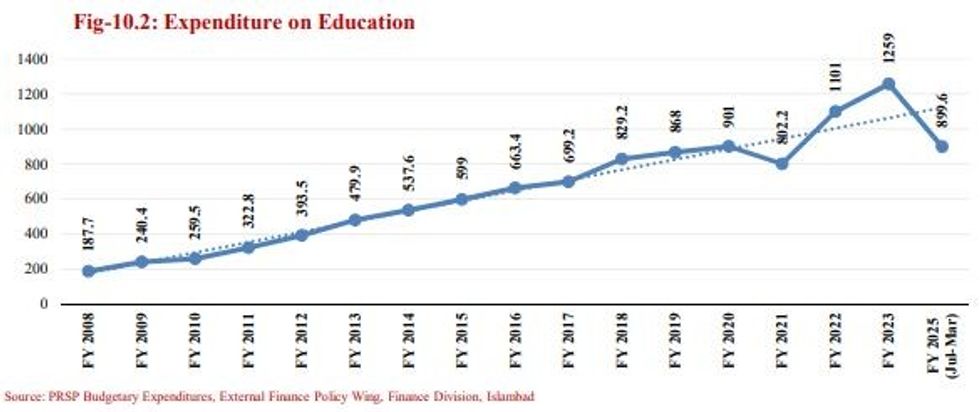
Punjab leads in education development spending with PKR 65.5 billion for 142 projects, while Sindh allocated PKR 48 billion for 713 schemes. Khyber Pakhtunkhwa set aside PKR 15.3 billion.
Despite these efforts, the country continues to miss key Sustainable Development Goals (SDGs) targets, particularly SDG 4 on quality education.
Health system sees modest gains
Pakistan’s health sector has seen some improvements over the past decade. Life expectancy rose to 67.6 years in 2023, and infant mortality dropped from 64.1 per 1,000 live births in 2015 to 50.1 in 2023.
Diphtheria, pertussis, and tetanus (DPT) immunization coverage rose to 86% in 2023, up from 72% in 2015. Still, the country lags behind South Asia's average life expectancy of 71.6 years and its lower infant mortality rate of 30.2 per 1,000 births.
The public health workforce includes over 319,000 doctors and 138,000 nurses as of 2024. But disparities remain in rural access and maternal health outcomes. The maternal mortality ratio remains at 186 deaths per 100,000 births—well above the South Asian average of 120.
Health spending rises, but gaps remain
Pakistan’s total health expenditure rose 9.7% in FY2024 to PKR 924.9 billion, with the federal PSDP allocating PKR 103.5 billion. The Ministry of National Health Services is overseeing 41 federal projects valued at PKR 154.6 billion.
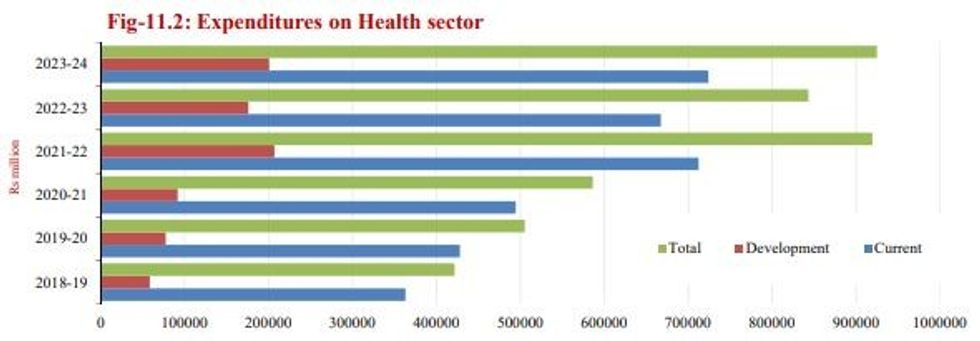
Provincial health allocations vary widely. Punjab leads again with Rs551.8 billion, including Rs174.6 billion for development. Balochistan spent just Rs42.2 billion, all of it on current expenditures.
Hunger index and disease burden complicate outlook
Pakistan ranks 109 out of 127 on the Global Hunger Index, with 33.2% of children stunted and 20.7% of the population undernourished. The hepatitis C burden remains among the world’s highest.
The government has launched large-scale programs to tackle hepatitis, diabetes, and deworming in schoolchildren. Yet these are long-term initiatives in a system where immediate outcomes remain elusive.


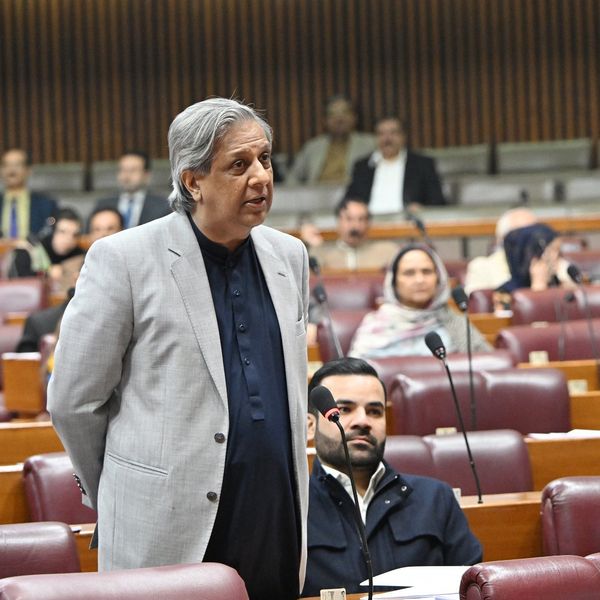







Comments
See what people are discussing